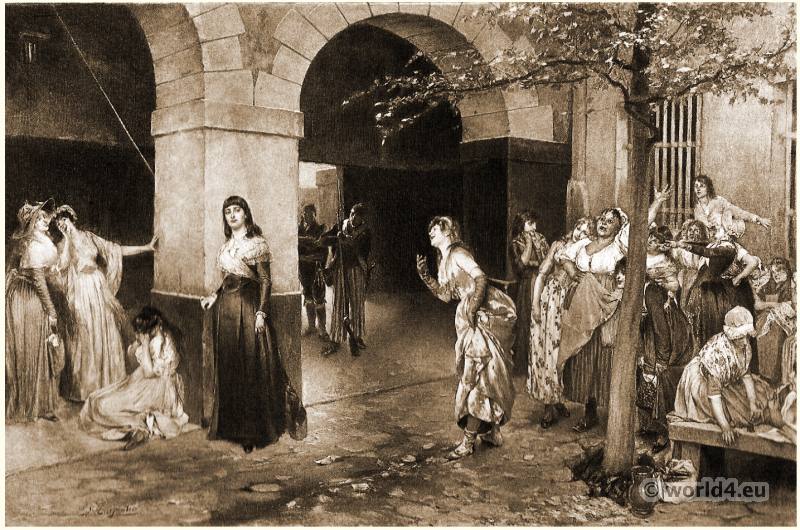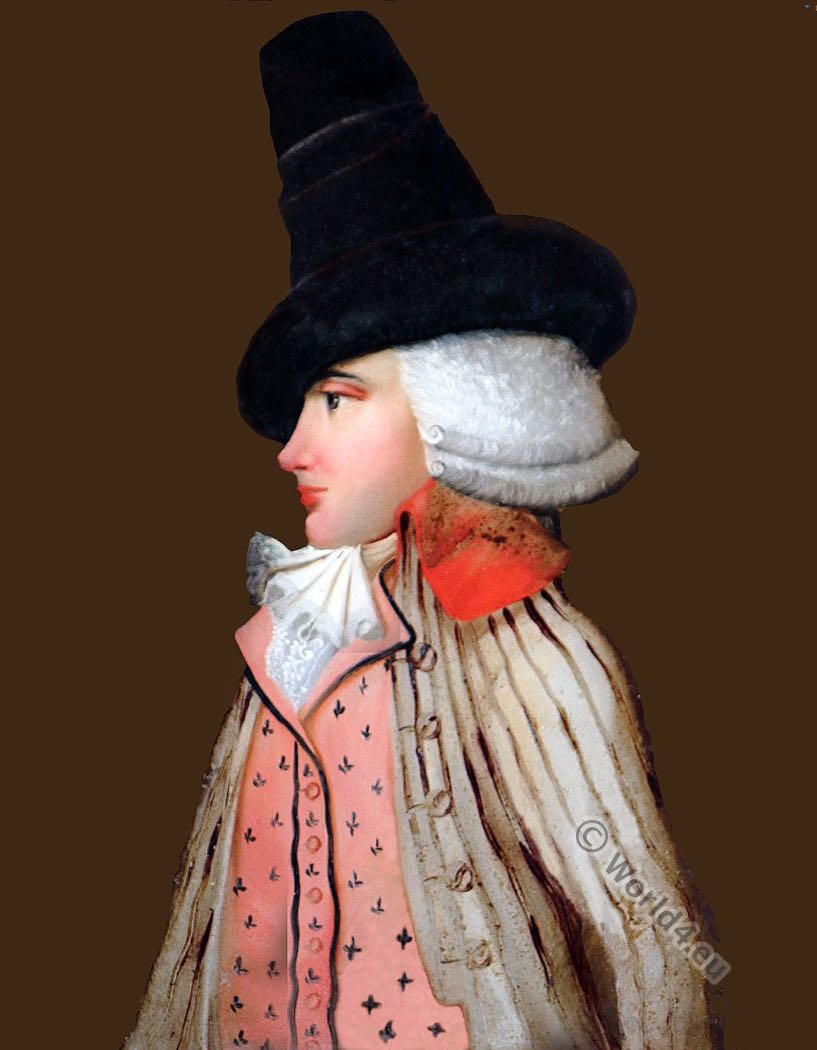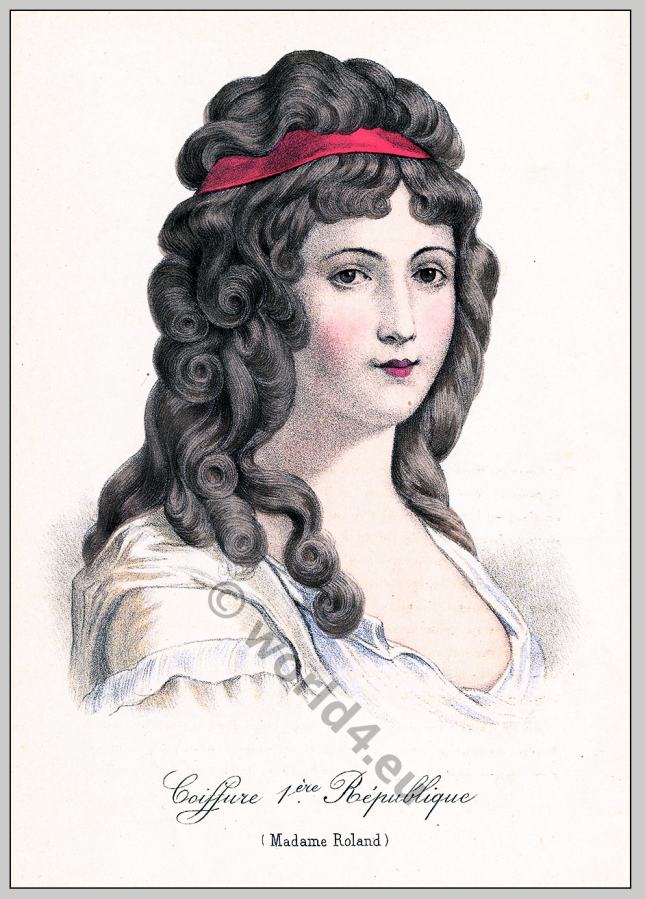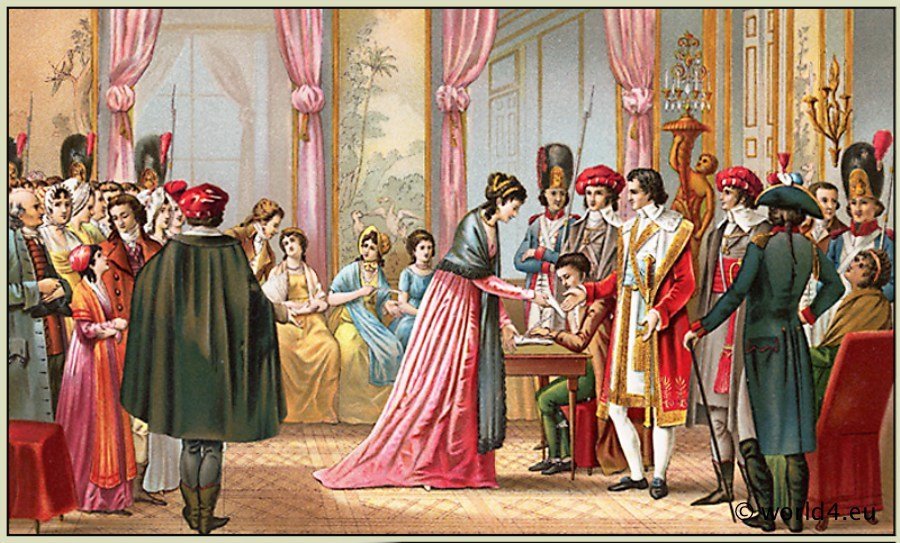Madam Roland in the prison Sainte-Pélagie.
Jeanne-Marie Roland de La Platière 1754-1793, led along with her husband during the time of the French Revolution, a famous political salon at the Hôtel Britannique in the rue Guénégaud.
Madame Roland was on 1 June arrested. She came into the prison of the Abbaye, then to Sainte-Pélagie and finally to the Conciergerie.
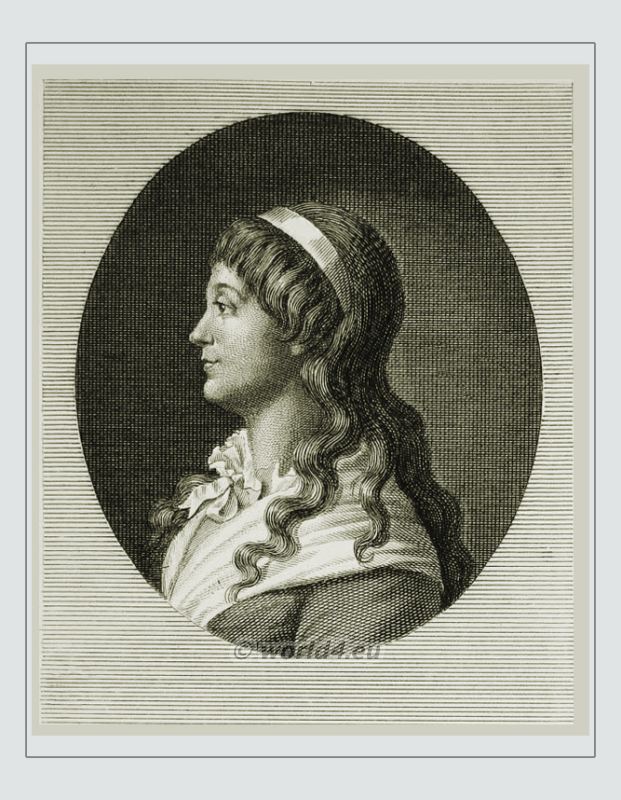
Here she wrote her Appel à l’impartiale postérité, memoirs dedicated to her daughter Eudora. The trial before the Revolutionary Tribunal took place on 8 of November and sentenced to death. She was beheaded on the Place de la Révolution, now the Place de la Concorde on the same evening by the drop hatchet of the guillotine. Before she put her head on the block, she called the now famous words: “Oh Liberty, what crimes you commit in your name!”
Literture:
- The private memoirs of Madame Roland.
- Madame Roland by John S. C. Abbott 1904.
- Memoirs of Madame de Staël, and of Madame Roland by Lydia M.F. Child.
- Biographical Sketch of Madame Roland (May 31, 1810) by The Belfast Monthly Magazine.
- Lettres de madame Roland, Volume: 1 (1900) by Roland (Marie-Jeanne ), Claude Perroud, Marthe Conor.
- Life of Madame Roland by Ida Ashworth Taylor.
- Charlotte Corday et Madame Roland, by Louise Colet.
- Mémoires de Madame Roland écrits durant sa captivité
Related
Discover more from World4 Costume Culture History
Subscribe to get the latest posts sent to your email.


